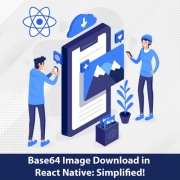A Complete Guide for Beginner to Pro Level What is Elastic Search?
Quick Summary: Learn how powerful Elastic search is! Our thorough tutorial can take you from novice to expert, unlocking the potential of this cutting-edge search and analytics engine. Utilize ES’s scalability and speed to accelerate data retrieval so your applications run instantly and intelligently. Start your adventure now and use ES to transform your data management completely!
Introduction
Elasticsearch is more than just a tool; it’s a force multiplier that enables you to unlock the full potential of your data, quickly advancing you from a novice to a pro.
Imagine searching and analyzing vast amounts of data with lightning speed, precision, and scalability. That’s ES in action!
This guide will cover comprehensive on ES core principle, install it and configuration procedures in details. you’ll grasp the process of indexing, Searching, and visualization of the data with ease and speed.
With the involvement of the Custom Software Development Services, you can automate your organizational processes and discover embedded problem-solving through analytics.
Want to read more?
Then read on!
What is Elastic Search?
Elasticsearch is an exceptionally versatile open-source full-text search and analytics engine. It is a circulated, free and open search and analytics engine for a wide range of information, including literary, mathematical, geospatial, organized, and unstructured.
ES permits you to store, search, and break down large volumes of information rapidly and in close to real-time. That is for the most part utilized as the basic innovation that powers applications that have complex pursuit highlights and prerequisites.
Elastic Search is based on Apache Lucene and was first delivered in 2010 by Elastic Search N.V. (presently known as Elastic). Known for its straightforward REST APIs, dispersed nature, speed, and versatility, It is the central component of the Elastic Stack, a bunch of free and open instruments for data ingestion, improvement, stockpiling, investigation, and perception.
Normally alluded to as the ELK Stack (after ES, Logstash, and Kibana), the Elastic Stack currently incorporates a rich assortment of lightweight delivery specialists known as Beats for sending information to Elastic Search.
What is the use of Elastic Search?
The speed and adaptability of Elastic Search and its capacity to file many kinds of content imply that it tends to be utilized for various use cases:
- Application search
- Site search
- Enterprise search
- Logging and log analytics
- Framework measurements and holder observing
- Geospatial information examination and perception
- Security analytics
- Scraping and Combining Public Data
- Full-Text Search
- Event Data and Metrics
- Visualizing Data
- Application execution checking
- Business analytics
- Infrastructure metrics and container monitoring
How does the Elastic Search work?
Raw data flows into Elastic Search from an assortment of sources, including logs, framework metrics, and web applications. Information ingestion is the cycle by which this crude data is parsed, standardized, and improved before it is filed in Elastic Search. Once filed in Elastic Search, clients can run complex questions against their data and use aggregations to recover complex rundowns of their information. From Kibana, clients can make strong representations of their info, share dashboards, and deal with the Elastic Stack.
It utilizes standard RESTful APIs and JSON. It keeps up with clients in numerous dialects, for example, Java, Python, .NET, SQL, Perl, PHP, and so forth Instruments like Kibana and Logstash permit you to sort out your information in exceptionally straightforward and prompt ways by utilizing diagrams, charts and performing granular pursuits.
How to implement?
You need to install the latest version of Java, download and install Elastic Search for your Operating System, lastly, start it with the default values – bin/elastic search. Run it in on localhost on your case where your project/site is. Administrations that run just Elastic Search independently from your instance, for instance on Amazon utilizing AWS Elastic Search. You can pick the case size and plan for your necessities as you wish. It is feasible to invest the real-time search and analytics elements of that to deal with your huge information by utilizing the Elastic Search-Hadoop (ES-Hadoop) connector.
Pros:
Bunches of search options: It executes plenty of highlights with regards to looking through like redid parting text into words, customized stemming, faceted search, full-text search, autocompletion, and instant search.
Document-oriented: It stores certifiable complex substances as organized JSON records and lists all fields naturally, with a better presentation result.
Speed: Talking about execution, Elastic Search can execute complex questions incredibly quickly. It additionally stores practically each of the organized questions usually utilized as a channel for the outcome set and executes them just a single time. For every other solicitation containing a reserved channel, it takes a look at the outcome from the cache.
Information/Data record: Elastic Search records any progressions made in exchanges signs on numerous nodes in the bunch to limit the opportunity of info loss. Tranquil API. That is API-driven.
Multi-tenure: Regularly, you have different clients or clients with discrete assortments of archives, and a client ought to always be unable to look through reports that don’t have a place with them. This regularly prompts a plan where each client has their list. Regularly, this prompt has such a large number of files. One bigger Elastic Search file is better.
Conveyed approach: Records can be isolated into shards, with every shard ready to have quite a few copies. Steering and rebalancing tasks are done naturally when new records are added.
Cons:
- In some cases, the issue of split-brain circumstances happens in Elastic Search.
- That doesn’t have multi-language support for taking care of handling request and response data.
- It is anything but a decent info store as different choices like MongoDB, Hadoop, and so on It performs well for little use cases, yet there should be an occurrence of gushing of TB’s data each day, it either stifles or loses the information.
- It is an adaptable and powerful data storage search engine, yet it is hard to learn. Particularly as far as big business search use, it isn’t generally so easiest as out the crate search.
Examples where it is used:
Netflix
Netflix depends on the ELK Stack across different use cases to screen and dissect client support activities and security logs. For instance, It is the hidden motor behind their informing framework. Netflix has consistently expanded its utilization of it from a couple of confined organizations to more than twelve groups comprising of a few hundred hubs.
eBay
With incalculable business-basic text search and analytics use cases that use it as the spine, eBay has made a custom ‘Elastic Search-as-a-Service’ stage to permit simple That group provisioning on their inner OpenStack-based cloud stage.
Conclusion
Elasticsearch is your key to mastering data exploration and analysis. You have read from the foundations to the more complex concepts. It will help you to understand the knowledge and abilities to use Elasticsearch expertly.
Keep experimenting, fine-tuning your queries, and exploring Elasticsearch’s rich ecosystem of plugins and integrations.Remain curious, remain innovative, and you’ll regularly be discovering new ways for your case to use Elasticsearch in alignment with your specific needs as well.
FAQ
What is Elasticsearch in simple terms?
A search and analysis hub that allows storing, searching, and analyzing vast amounts of data in a convenient manner is Elasticsearch engine. It plays the role of organizing data so it would be accessible fast, which makes it helpful for many purposes from website search to log analysis up to business intelligence and the latter helps users find information fast.
How can I learn Elasticsearch?
To master Elasticsearch, first of all study the materials in official documentation, which is the most reliable source. Thereby, building a resourceful study plan including self-paced courses from learning platforms like Udemy or Coursera, which offer in-depth Elasticsearch courses. Books like “Elasticsearch: The guide will be helpful when it comes to providing implementation details especially when a short guide is used. Because practical experience is important, develop a practical usable environment, install Elasticsearch, load data, and experiment with queries. Taking part in the Elastic Search forums gives you the chances to overcome your issues and gain skills for better development. In the process you will cover all the ground and may move into deepen the subject to gain more depth of knowledge.
What is the use of Elasticsearch?
Elasticsearch is primarily used for efficient and fast searching, storing, and analyzing large volumes of data. Its applications include website search engines, log and event data analysis, real-time application monitoring, business intelligence, and more. Elasticsearch’s versatile capabilities make it valuable across various industries for extracting insights and improving data-driven decision-making.
What are types in Elasticsearch?
In Elasticsearch, “types” used to be a way to organize data within an index. However, starting from Elasticsearch 7.0, types have been deprecated, and indices can now only contain a single document type. This change simplifies the data model, making Elasticsearch more efficient and scalable.
Is Elasticsearch easy to use?
Elasticsearch can be straightforward for basic tasks like text search, but it becomes more complex for advanced use cases. Its ease of use depends on your familiarity with search and data analytics concepts. While it offers powerful capabilities, setting up, configuring, and optimizing Elasticsearch can be challenging, requiring expertise for effective utilization.













